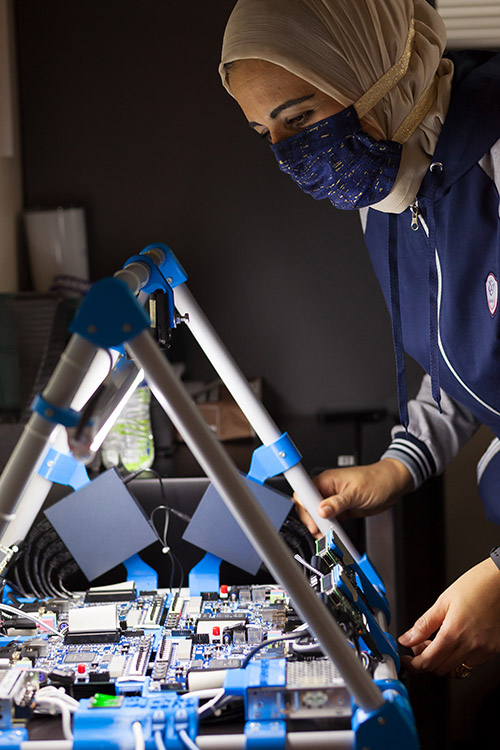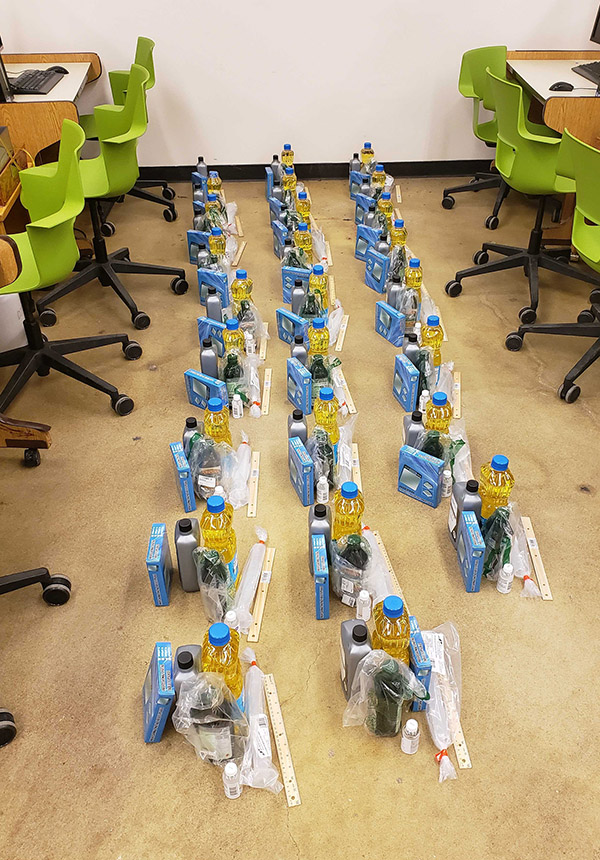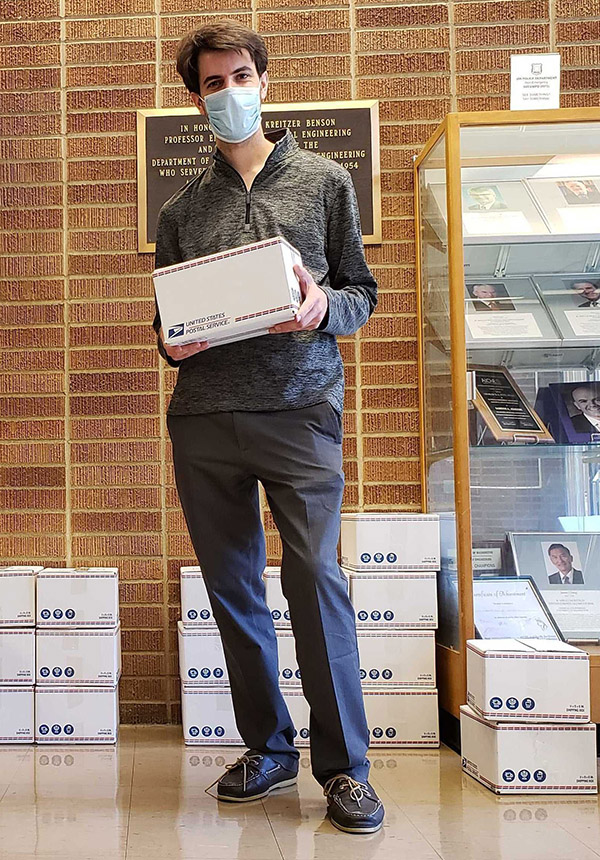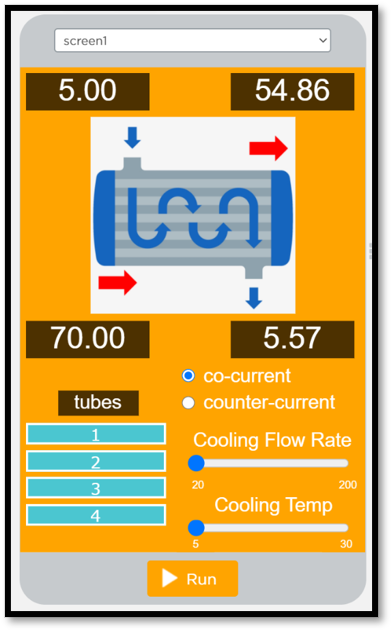By Chelsea Yates
How might we apply remote learning beyond the pandemic? UW Engineering instructors and staff weigh in.
Remote teaching and learning has introduced new technologies, tools and methods of communication, and it has shed light on ways to expand accessibility and equity. Here we highlight UW Engineering instructors and staff who have been leveraging this moment to revise and expand their teaching practices. Their work — like that of many others across the College — has the potential to reshape engineering education for years to come.
Expanding global collaboration and community
Rania Hussein, Electrical & Computer Engineering assistant teaching professor

ECE assistant teaching professor Rania Hussein set up FPGA circuit boards for students to access remotely. Photo by Ryan Hoover / UW ECE
I partnered with educators at four universities — University of Michigan, Monash University in Malaysia, The Public University of Navarre UPNA in Spain and the Federal University of Sao Paulo in Brazil — to create a distributed remote FPGA lab through a global platform called LabsLand. Students can remotely access real hardware located at any of the participating universities.
I piloted this project in my “EE/CSE 371 Design of Digital Circuits & Systems” course this fall by creating a remote lab of eight FPGA boards at the UW connected to our distributed network. Instead of shipping lab kits to the 60 students enrolled in my course, I had students use the remote lab to access hardware on campus as well as at the other universities and complete their assignments. I wanted students to continue designing and testing circuits after the class ended and develop their technical skills equitably without having to return borrowed kits or purchase expensive hardware.
The growing sense of community is remarkable. Students from different cultures are connected virtually through the remote lab, and they seem to appreciate knowing their universities are serving their educational needs while helping other students worldwide.
My partners and I are committed to meeting students’ needs during challenging times and promoting a global community of learners. Our work aims to bridge the times before and after COVID-19 and presents a scalable solution that allows accessibility worldwide. As a community-oriented educator, I see this project an example of global community development in action — through sharing resources and creating opportunities for cross-cultural engagement, we are preparing students to be tomorrow’s global engineers.
Rethinking hands-on labs
Chad Curtis, Chemical Engineering lecturer

Kits for at-home experimentation were assembled before the start of the quarter. Photo courtesy of Chad Curtis

ChemE lecturer Chad Curtis with packaged kits ready for shipment. Photo courtesy of Chad Curtis

Curtis developed smartphone apps on heat exchange and statistical analysis so students could collect and analyze simulated data.
“CHEM E 436 and 437 Unit Operations” is a two-part lab series introducing ChemE undergraduates to chemical process fundamentals. I teach part one on heat transfer and fluid dynamics. When rethinking this course, I boiled it down to the basics: What do students need to understand about heat transfer and fluid flow? How can they observe these principles at home?
On campus, we have access to distillation columns and heat exchangers — equipment you would find in chemical plants. For the online class, I developed experiments using materials found at home. A coffee cup warmer can be used as a heat source instead of steam. In place of a pump, a bucket and tubing can drive gravity-driven flow through a microfluidic device.
Before fall quarter, my colleague Kyle Caldwell (who teaches a colloids lab in ChemE) and I assembled and shipped kits to our students. We ensured everything was inexpensive and accessible. We designed experiments with materials that students could acquire themselves and get reimbursed if they were unable to receive them by mail. I also developed apps on heat exchange and statistical analysis with which students could collect their own simulated data to analyze in class.
Throughout the quarter, students worked in teams to experiment and collect data. Because our experiments were focused on fundamentals, I invited guest speakers into our remote lab to discuss how these topics applied in industry and academia. Students loved learning how their basic at-home activities connected to future career opportunities. Since the home labs were simpler and took place in less controlled environments, they required more analysis: Students had to carefully consider their models, question their assumptions and troubleshoot. That level of problem-solving is key to being an engineer.
Making engineering education more accessible
Joyce Yen, UW ADVANCE director
I teach “ENGR 401 Leadership Development to Promote Equity in Engineering Relationships (PEERs),” with psychology professor Sapna Cheryan. Our students explore topics such as diversity in engineering, the impact of unconscious and structural bias, community engagement and leadership. After pivoting to the digital environment, we identified several ways remote learning can make engineering education more accessible and produce engineers who approach engineering more inclusively.
Moving classes online has solidified how problematic the “best student” myth is — the assumption that the best students easily attend and participate in class. Not only is it outdated, it alienates a diversifying student body. Today’s students have family commitments, some live far from campus or face challenges physically getting to class, some work, some come from cultures in which speaking up in class is considered inappropriate. The pandemic has laid bare this reality. Remote teaching has pushed many instructors not only to reconsider how they deliver content but also to adjust their expectations regarding student performance and engagement. It’s not about lowering standards, it’s about setting different, more equitable standards.
Is it important that all students be online to attend class at the same time? Not always. Recording and uploading shorter, closed-captioned lessons lets students engage with content when and how it works best for them. Online communication tools allow students to connect with instructors and each other more frequently and flexibly. Panapto and Canvas chat boards create diverse opportunities for more students to participate in class discussions.
We all can incorporate many of these remote practices into our in-person classes once it’s safe to return to campus. Making engineering education more accessible for some makes it more accessible for all.
Reimagining capstones and community building
Ed Connery, Aeronautics & Astronautics Director of Academic Services
The 2020 A&A Capstone Film Fest Best in Show/Alumni’s Choice Award went to the CubeSat team for its video about how the team designed, built and tested an attitude control system aboard its SOC-i CubeSat miniature satellite. Video courtesy of UW A&A
Capstone projects ask seniors to combine and apply the skills they’ve learned through their engineering coursework. Students work in teams to complete a project then explain their work to diverse audiences. Traditionally, capstones consist of a written report, technical presentation assessed by faculty and industry experts, and an open poster showcase.
Students were well into capstone work when we went remote last spring. Everyone had to stop and reassess, which was a huge learning experience. However, we discovered that remote capstone projects introduced a real-world context that can be lacking in traditional in-person projects: modern aerospace engineers routinely work on teams dispersed across different locations, even time zones.
Since we couldn’t hold our poster showcase in-person last spring, we asked students to make short videos about their projects. This capitalized on creative and communication skills our students already had, and it invited them to think differently about how they communicate their work.
We hosted a virtual film fest to share the videos and celebrate our students’ efforts. It proved to be a great way to engage industry partners, alumni, donors and family. These audiences are always welcome at our capstone showcases, but the digital environment gave them more flexibility — hopping on Zoom and watching videos online is much easier than traveling to campus. We assembled a distinguished alumni judges’ panel and had a surprise guest speaker, commercial space flight expert Rob Meyerson. Even our graduate students got involved as event emcees and attendees.
Looking ahead, whether or not we’re on campus, our videos are likely to stick. We have the technology and creativity to make capstone presentations modern and interesting and bring community together.
Read more
Learn more about how the College of Engineering is translating excellence and access to the remote learning environment.
Originally published December 28, 2020